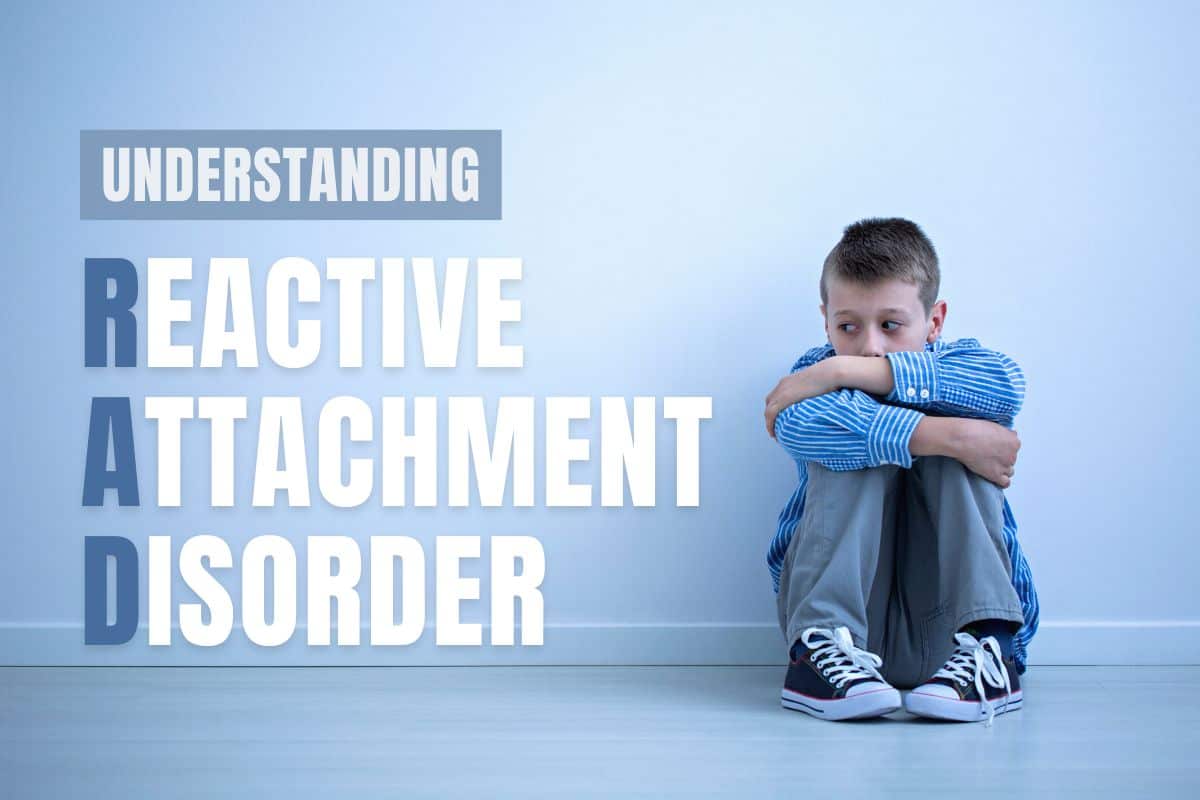“I think your child has RAD.”
This sentence, coming from a case worker, a therapist, or a psychiatrist, can conger up any number of thoughts and emotions in a foster or adoptive parent.
Before your emotions or thoughts run away with you, let us stop and look at what RAD (Reactive Attachment Disorder) is.
What Does RAD Stand for?
- Reactive means your child is often not thinking with his “upstairs brain” (his cortex). He reacts to the situation from his “downstairs brain” (his fight or flight brain). His behavior is automatic, self-protective, and reactive because he perceives being threatened somehow—even if he is not in any real danger.
- Attachment and bonding are often used interchangeably yet have very different meanings. Bonding is what a normal, healthy adult will unconditionally do toward a child. Bonding is adult to child. Attachment, on the other hand, is what a normal, healthy child will conditionally do if she assesses her environment is safe enough and if her primary caregiver is consistent enough to be relied upon. From the child’s perspective, attachment and trust are inseparable. Attachment is child to adult, occurring within the first 12-24 months of life.
- Disorder is a way of saying your child’s behavior is significantly what is not normal or healthy. He is behaving in a “dis-ordered” way.
Reactive Attachment Disorder Description
Simply put, RAD means your child is unable (at this time) to trust you to meet his needs and cannot make a healthy attachment to you; his behavior tends to be reactionary rather than formally thinking through his actions. And these behaviors create significant disharmony, disorder, and chaos for him and the rest of the family.
RAD Diagnosis
The term RAD is used in two primary ways. First, it is an official diagnosis in the Diagnostic and Statistical Manual-5 (DSM-5) known as Reactive Attachment Disorder.
More frequently, however, the term RAD is used in a broader sense to describe the overarching inability of a child to trust and attach to her caregiver. Her belief system and behavior will fall somewhere across a broad continuum ranging from “mild” (sometimes called “attachment issues”) to “moderate” (labeled “disrupted attachment dynamics” by some) to “wild” (meeting the DSM-5 criteria for Reactive Attachment Disorder mentioned above).
Across this broad continuum, one of three “insecure attachment styles” will likely emerge. Each style has its own set of reactive, maladaptive attitudes and behaviors.
Avoidant Style
The avoidant child shows little or no desire to be held or comforted by his caregiver—a defense mechanism often resulting from a cold, non-nurturing, rejecting, or abusive history. As insecure as your child feels, there’s no reason to approach you because he believes there will be no comfort or support there anyway.
Ambivalent Style
An ambivalent child feels insecure, clingy, and hyper-vigilant. She develops a “push-pull” method of relating, reflecting inconsistent early caregiving. She believes you’ll abandon her if she doesn’t continually hold your attention.
Disorganized Style
A child with a disorganized attachment style displays a variety of inconsistent behaviors. He may be hyper-vigilant or “zoned-out.” He may not approach you, but neither will he push you away. His behavior has no regular pattern like you see with an avoidant or ambivalent child.
Additional Notes on RAD
Please note: Your child may be in a very healthy, nurturing, and safe environment now. You may be ready and able to meet her needs now. That’s not the issue. Your child’s unconscious, survival-mind beliefs and perceptions regarding her environment make her unable to truly trust you, even if they are trustworthy.
To make matters more complicated, other mental or physical health issues may be present. There may be learning disabilities (ADHD – attention deficit hyperactivity disorder, dyslexia, or others), cognitive delays or disabilities (such as sensory processing disorder), fetal alcohol syndrome, autism spectrum disorder, physical and/or cognitive impairments due to poor nutrition, just to name a few. Any of these issues may be the primary cause underlying your child’s maladaptive behavior, or they may co-exist with RAD.

Talk to a Counselor
Reach a Focus on the Family counselor toll-free at 1-855-771-HELP (4357).
More Resources
When They Get the Diagnosis of RAD
Arriving at a diagnosis of RAD—whether official or not—needs to be done slowly and methodically. Research the possible issues and seek the assistance of a licensed mental health professional with an expertise in attachment and trauma. Having a complete and thorough assessment will set you well on your way to developing a workable plan for addressing the behavior you see in your child. If there are other underlying issues, address them first.
RAD Adoption
Many times, the adoption journey can feel like you’re waiting, waiting, waiting . . . now . . . hurry, hurry, hurry! Slow down the process—as much as you are able—and collect all the information you can about the child, his mother and father, and as much about the reason he’s being placed for adoption. You may have to press for information, but it will be worth the effort.
Keep in mind:
- When RAD is present (whether “mild” or “wild”), it is a neurological issue. It is not just a matter of bad behavior. Yes, the behavior is unacceptable, yet it is far deeper than that. Your child has a damaged brain. A brain that is healable, still you must begin with healing his brain before you can successfully address his behavior.
- Attachment beings in utero and can be compromised by a difficult pregnancy or delivery.
- It is a marathon, not a sprint. For sure, healing and attachment can happen. It will take time, and there will likely be hard times along the way. Accept this and settle in to win the long game.
- Realize in some cases, even the best parenting, the best support, and the best therapy may not be enough to help your child’s behavior be safe enough for him to remain in your home. If that day ever comes, as painful as it will be, take heart, God allowed him to be under your love and care for that period of time. That time will not be lost in the end. Sometimes the long game goes on longer than you expected.
RAD Next Steps
Begin with a full battery of assessments. Do not be surprised if you need to use the services of several professionals to achieve a full diagnostic workup.
If attachment issues are present in your child, don’t be discouraged; get proactive. Attachment can be healed. Search and find a good Christian mental health professional who understands children, trauma, and attachment. A Trust-Based Relational Intervention (TBRI) trained clinician is a good place to start. If no qualified Christian therapist is available, then secure the best non-Christian clinician you can who is supportive of your Christian values and beliefs.
You will also want to rally all the support available to you, for your child and for you, both personally and professionally. Do it now, don’t wait until something stressful happens. The more proactive you are, the better you’ll weather the hard time if/when they come.
What is Rad Conclusion:
This may sound overly spiritualizing, but it’s critically important to bathe your child, your family and yourself in prayer. God—the Great Healer—is ready and able to walk with you on your adoption journey.
You can also call our Counseling department for a free over-the-phone consultation about your specific situation. One of our licensed or pastoral counselors would be happy to discuss any concerns you may have. They can also provide you with referrals to a professional counselor in your area who has experience with attachment, trauma-based issues, or who is trained in TBRI.















